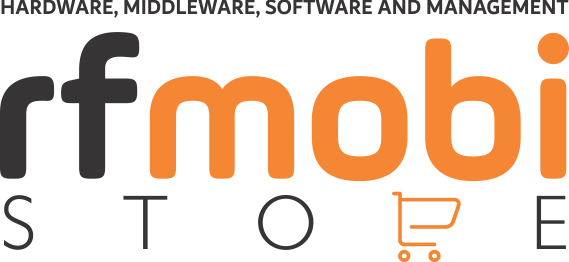RFID and BLE are two technologies used for product tracking, inventory control, asset tracking and other similar applications.
While both offer solutions for data collection and transmission, they have significant differences in terms of range, speed, cost and security.
Let’s start by looking at the difference between the two technologies:
What is RFID?

RFID – Radio Frequency Identification:
RFID is an acronym for “Radio Frequency Identification”.
It is a technology that allows objects to be identified and tracked using radio signals.
In a typical RFID system, objects are equipped with RFID tags that contain a microchip and an antenna.
The antenna is used to transmit radio signals, while the microchip contains information about the object, such as the serial number or date of manufacture.
When the RFID tag is activated by a reader, it transmits its data to the reader via radio waves.
RFID systems have a limited range, usually ranging from a few centimeters to a few meters, depending on the type of RFID tag and the reader used.
They are used in a variety of applications such as inventory control in stores, asset tracking in companies, and access control at events.
What is BLE?

BLE – Bluetooh Low Energy:
BLE is an acronym for “Bluetooth Low Energy”. It is a wireless communication technology that allows devices to communicate over short distances using radio signals.
Unlike classic Bluetooth, which is used to transmit large amounts of data over long distances, BLE is designed to transmit small amounts of data over short distances.
This makes it suitable for applications such as asset tracking, motion sensors and health monitoring.
BLE devices are also equipped with a microchip and antenna, just like RFID tags.
They can be used in a variety of applications such as wearable devices, home automation and asset tracking.
Comparing RFID and BLE
Although RFID and BLE are similar technologies, they differ in some important ways:
Reach:
The range is the distance that radio signals can travel between the reader/device and the tag.
RFID has a limited range, usually a few centimeters to a few meters. BLE, on the other hand, has a longer range, reaching up to 100 meters.
Speed:
Speed is how fast data can be transmitted between devices.
RFID is generally slower than BLE in terms of data transfer.
BLE is designed to transfer small amounts of data quickly, while RFID is designed to quickly identify objects in a limited area.
Cost is another important factor to consider when choosing between RFID and BLE.
RFID tags tend to be less expensive than BLE devices, but the total cost of a system can vary widely depending on the application and the number of devices needed.
Security:
Security is another aspect to consider.
RFID is a wireless communication technology that can be easily intercepted by listening devices.
BLE, on the other hand, uses encryption to protect the data that is transmitted between devices. This makes BLE more secure than RFID in terms of communication.
Conclusion:
In conclusion, the choice between RFID and BLE depends on the specific needs of your application.
If you need a system to identify and track objects in a limited area, RFID may be the right choice for you.
If you need a system to securely transmit small amounts of data over longer distances, BLE may be your best choice.
Both technologies have their advantages and disadvantages, and the final choice will depend on the specific needs and goals of your application.
Understanding the differences between RFID and BLE can help you make an informed decision about which technology to use in your application.












 USD
USD